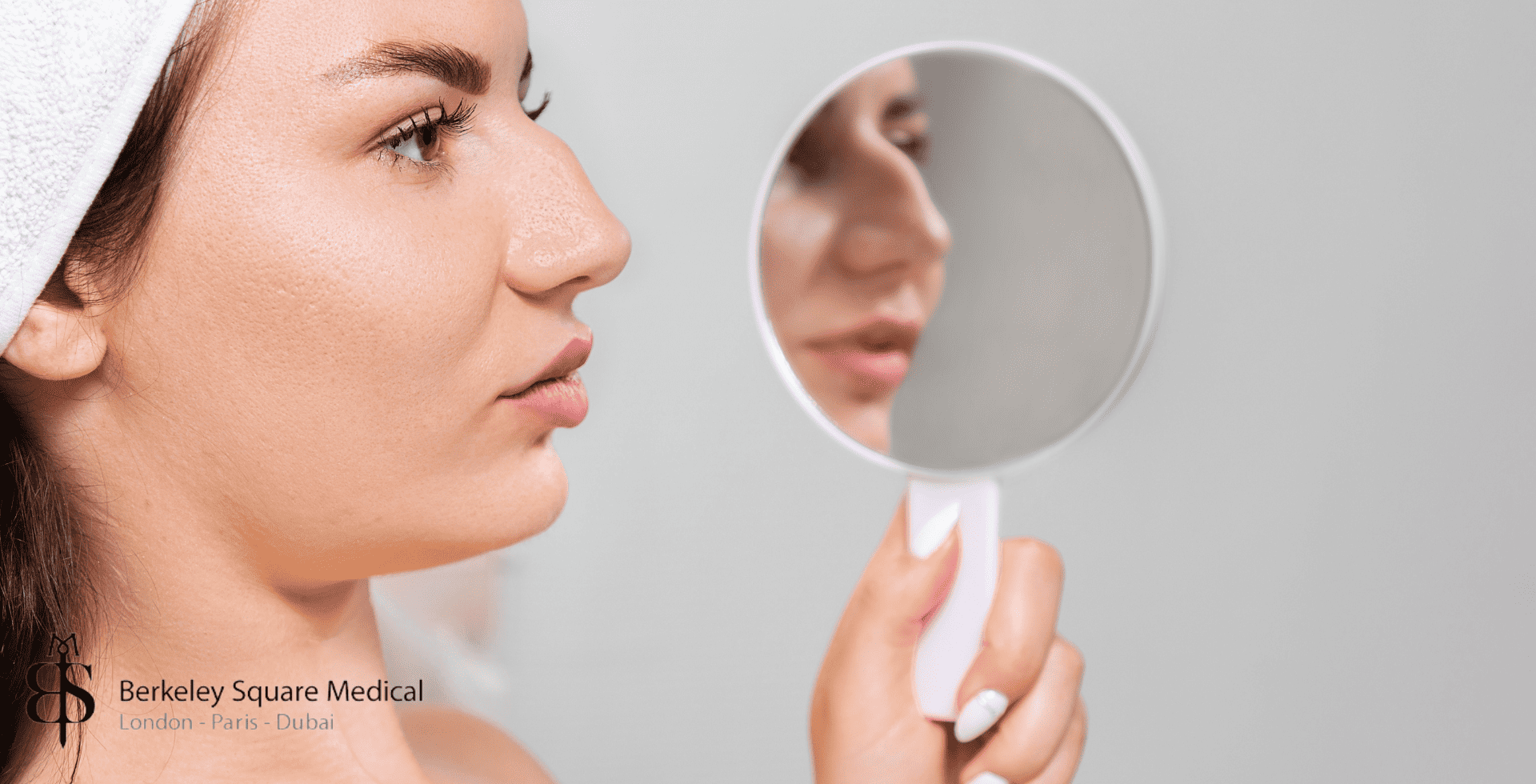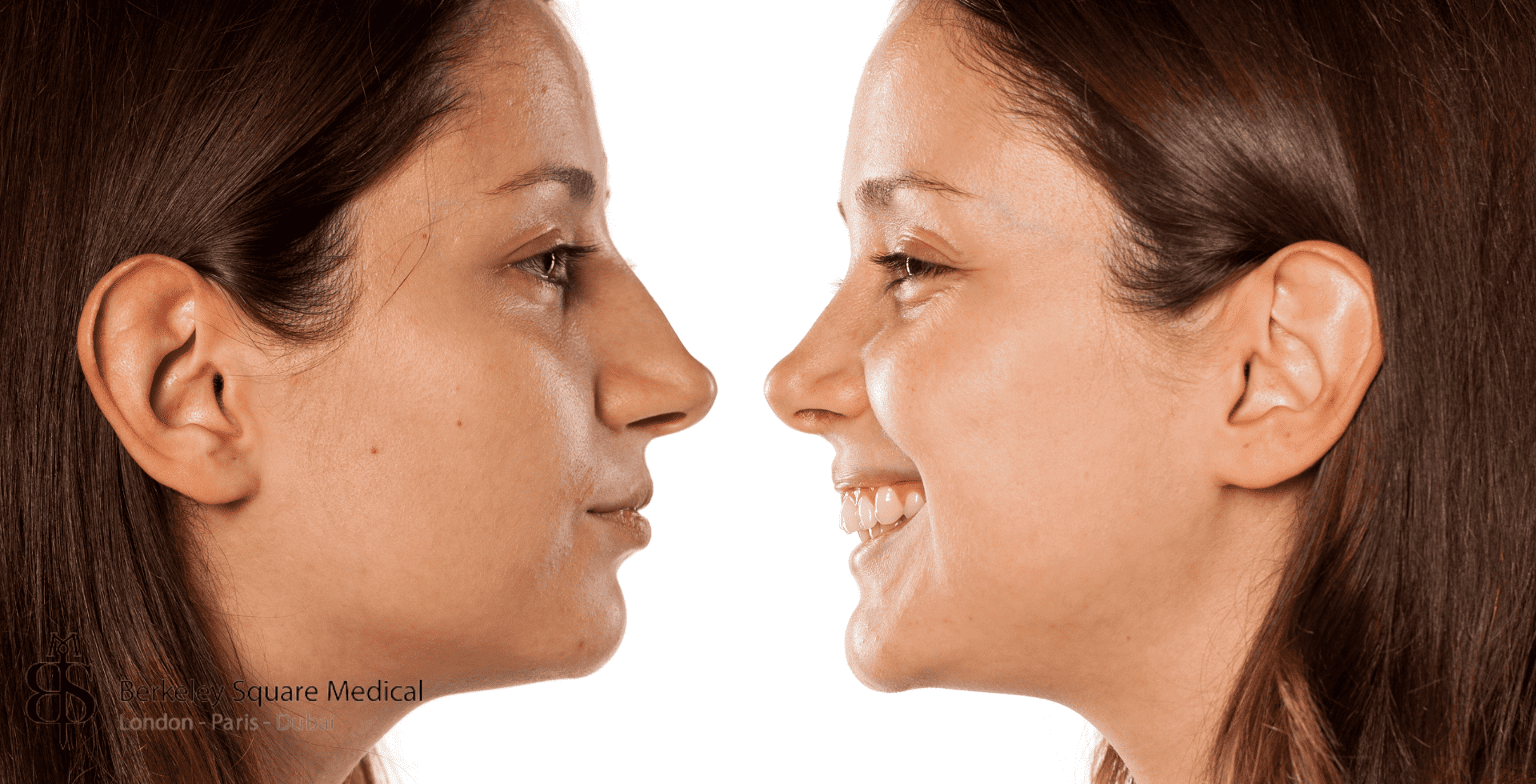Nasal bumps, varying from subtle irregularities on the bridge to more pronounced humps, can significantly influence the overall facial profile. These bumps may arise from a range of causes, including genetic factors, developmental issues, or as a result of injury. Understanding the root cause of a nasal bump is crucial in determining the most effective treatment approach.
This comprehensive guide delves into the realm of nose bump removal, offering insights into both non-surgical and surgical methods. From minimally invasive techniques to the intricacies of rhinoplasty, we aim to cover a spectrum of solutions tailored to varying needs and preferences. Whether you are considering a subtle refinement or a significant transformation, this article seeks to equip you with the knowledge and understanding needed to navigate your journey.
What Are Nasal Bumps
Before delving into the various treatment options for nasal bump removal, let’s cover what nasal bumps are, why they occur, and how they affect one’s appearance. This knowledge forms the foundation for making informed decisions about potential treatments.
Nasal bumps, also known as dorsal humps, are protrusions or elevations on the nasal bridge. They can vary significantly in size and shape, impacting the nose’s profile. There are primarily two types of nasal bumps:
- Bony Bumps: These are often found on the upper third of the nose and are composed of bone.
- Cartilaginous Bumps: Located on the lower two-thirds of the nasal bridge, these bumps are made up of cartilage.

Causes of Nasal Bumps
Nasal bumps can arise from several factors:
- Genetic Predisposition: In many cases, the shape of the nose, including any bumps, is a hereditary trait.
- Developmental Factors: As the nose develops during adolescence, irregularities in the growth of bone and cartilage can lead to the formation of bumps.
- Injury: Trauma to the nose, such as from sports or accidents, can result in the development of a nasal bump.
- Previous Surgeries: In some instances, bumps may develop or become more noticeable after a previous nasal surgery.
Treatment Options for Nasal Bump Removal
These range from non-surgical methods, suitable for minor corrections, to surgical approaches like rhinoplasty for more significant alterations. The choice of treatment largely depends on the size and nature of the nasal bump, as well as the individual’s aesthetic goals and medical history.
Non-Surgical Treatment Options
- Dermal Fillers: For those seeking a minimally invasive approach, dermal fillers can be an option. This method involves injecting fillers around the bump to create a smoother nasal profile. It’s a temporary solution that can subtly alter the appearance of the nose without surgery.
- Nasal Steroid Injections: In some cases, steroid injections can help reduce the size of a nasal bump, particularly if it’s related to soft tissue or cartilage. This approach is less common and is typically considered for specific conditions.
Surgical Treatment Option – Rhinoplasty (Nose Job)
This surgical procedure is the most comprehensive approach for permanent nasal bump (dorsal hump) removal. Rhinoplasty not only addresses the nasal bump but also reshapes the nose for overall aesthetic enhancement. It involves modifying the bone and cartilage structure of the nose and can be executed through different techniques, depending on the specific needs of the patient:
- Closed Rhinoplasty: In this method, incisions are made within the nostrils, making the procedure less invasive with no visible external scars. It is typically chosen for less extensive reshaping, including minor hump reduction.
- Open Rhinoplasty: This technique involves an incision along the columella (the tissue between the nostrils). It provides greater access to the nasal structure, allowing for more significant reshaping. This approach is often preferred for larger bumps or more complex nasal modifications.
Dorsal Hump Removal as Part of Rhinoplasty
In the context of rhinoplasty, dorsal hump removal is a common component. It involves either shaving down the bone, reshaping the cartilage, or a combination of both, depending on the composition of the bump.
The procedure is tailored to each individual, ensuring that the removal of the bump harmonises with the rest of the nose and the overall facial structure.
Considerations for Surgical Treatment
- Consultation with a Qualified Surgeon: It is crucial to consult with a board-certified plastic surgeon or otolaryngologist (ENT specialist) to discuss your goals and expectations.
- Customisation of the Procedure: Every nose is unique; thus, the surgical plan should be tailored to the individual’s facial structure and aesthetic desires.
- Recovery and Aftercare: Post-surgery, there will be a period of recovery, which involves swelling and healing. Following your surgeon’s aftercare instructions is vital for optimal results.
- Potential Risks and Complications: As with any surgery, there are risks such as infection, bleeding, or unsatisfactory results. Discuss these thoroughly with your surgeon.
Post-Surgical Recovery and Managing Expectations
After undergoing a surgical procedure for nasal bump removal, understanding the recovery process and managing expectations is important for a smooth healing journey. Here is what to expect.
Immediate Post-Surgery Period
- Initial Recovery: Immediately after surgery, patients typically experience swelling and bruising around the nose and eyes. This is normal and generally subsides within the first two weeks.
- Pain Management: Post-operative pain is usually manageable with prescribed medications. It’s important to follow the surgeon’s instructions regarding medication to ensure comfort and proper healing.
- Bandages and Splints: To support the new shape of the nose and protect it during the initial healing phase, splints and bandages are commonly applied. These are usually removed within a week after the surgery.

The First Few Weeks
- Swelling and Bruising: While the majority of swelling and bruising diminishes within the first two weeks, some residual swelling may persist, particularly in the nasal tip. This can take several months to fully resolve.
- Limited Physical Activity: Patients are advised to avoid strenuous activities, heavy lifting, and intense exercise for a few weeks after surgery to prevent complications and aid in healing.
- Follow-up Visits: Regular follow-up appointments with the surgeon are essential to monitor the healing process and address any concerns that may arise.
Long-Term Recovery and Results
- Patience is Key: The final shape of the nose may not be apparent until up to a year after surgery, as the nose continues to heal and settle.
- Managing Expectations: It’s important for patients to have realistic expectations. While rhinoplasty can significantly improve the appearance of the nose, it is also important to understand the limitations of surgery and the variability of individual healing processes.
- Secondary Adjustments: In some cases, minor revisions may be necessary to achieve the desired outcome. These are typically less extensive than the initial surgery.
Tips for a Smooth Recovery
- Follow Post-Operative Instructions: Adhering strictly to the surgeon’s aftercare instructions is critical for a successful recovery.
- Rest and Elevation: Keeping the head elevated, especially during sleep, can help reduce swelling.
- Avoiding Certain Facial Expressions and Movements: Patients are often advised to limit facial expressions and to avoid glasses resting on the nose for a while to prevent pressure on the healing nasal tissues.
FAQ
Are there any risks associated with rhinoplasty for nasal bump removal?
Yes, as with any surgery, rhinoplasty carries risks. Common risks include infection, bleeding, anaesthesia reactions, and dissatisfaction with aesthetic results. Less common but serious risks include difficulty breathing through the nose, persistent pain, and the need for revision surgery. It’s important to discuss these risks in detail with your surgeon.
How long does it take to see the final results of nasal bump removal surgery?
The initial swelling typically subsides within a few weeks, but it can take up to a year or more for the final shape of the nose to fully settle. This is especially true for the tip of the nose, which may take longer to reveal its final contour due to prolonged swelling.
Can a nasal bump reappear after surgery?
It is uncommon for a nasal bump to reappear after successful rhinoplasty. However, factors like additional trauma to the nose, certain medical conditions, or incomplete removal during the initial surgery could potentially lead to changes. Regular follow-up with your surgeon can help address any concerns post-surgery.
Will insurance cover my nasal bump removal surgery?
Insurance coverage for nasal bump removal depends on whether the procedure is deemed cosmetic or medically necessary. If the surgery is solely for cosmetic reasons, it is unlikely to be covered by insurance. However, if the procedure is required to correct a functional issue, such as breathing difficulties, it may be partially or fully covered. It’s important to consult with your insurance provider and surgeon to understand your coverage.
For more information please visit: https://www.berkeleysquaremedical.com/rhinoplasty/
References and Further Reading
- AAFPRS 2021 Survey: The American Academy of Facial Plastic and Reconstructive Surgery’s 2021 survey reports a significant increase in both surgical and non-surgical facial procedures, driven by factors like the “Zoom effect” and increased disposable income. (AAFPRS)
- Rhinoplasty Risks – American Society of Plastic Surgeons: This source lists potential risks of rhinoplasty, including anaesthesia risks, changes in skin sensation, difficulty breathing, and the possibility of additional surgery. (ASOPS)
- Rhinoplasty Recovery – Mayo Clinic: The Mayo Clinic details the rhinoplasty recovery process, emphasising the importance of resting with elevated head and the fact that full healing and final results can take up to a year. (Mayo Clinic)
Sanjay is a Senior Clinical Member at Berkeley Square Medical carrying over a decade of experience. He has assisted over 1500 surgeries carried out at the hospital supporting patients both pre and post-surgery throughout their treatment journeys. This article was written with the contribution of
Dr Taimur Shoaib, our Consultant Plastic Surgeon.
Latest posts by Sanjay Rai
(see all)
Sharing is caring!
